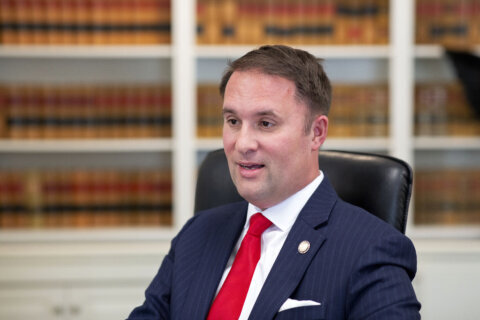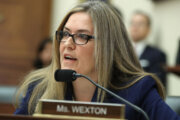When it comes to making the decision to return to class in the fall, Virginia’s top educator said that there is more to consider than just the benefits of in-person learning.
While learning is the major component, there are other vital services schools deliver, such as the free and reduced lunches a half-million kids in the state rely on.
“Because of the closure the past four months, our school nutrition workers were serving about one-quarter million meals everyday,” said Virginia Secretary of Education Atif Qarni.
That’s only half the number of meals they usually serve every day, and that is not even the number of children who are getting meals.
“When we are packaging meals, and the families are picking them up, it would be breakfast, lunch and dinner, so the number is actually much lower than that,” he said.
But there is no simple solution to getting meals to those who need them, he said.
“Not everybody was able to come to a site and pick up meals. A lot of the working-class families, the parents are working, they’re first responders, essential workers, and they were just unable to pick up these meals,” he said.
In many cases, school districts are getting creative by using busses and paying hazard pay to teachers to deliver meals to kids they know need them. But they cannot get meals to all the families in need.
Qarni also said these students are not just suffering a nutritional deficit.
“Our school social workers, school psychologists really play a role in identifying trauma or adverse experiences a child may be facing at home, of domestic abuse and so forth. Those services are also interrupted,” Qarni said.
Looking toward the fall and what the new school year may bring, Qarni said that currently many signs are pointing to a Phase Three hybrid approach, which means students will be in school a few days a week and learn virtually the other days.
“This hybrid approach is probably the most difficult because it creates so many challenges for transportation with child care, throwing schedules for families, teachers, everyone, completely out of sync,” Qarni said. “The hybrid approach the school divisions are probably tougher than doing it
100% one way or another.”
But the hybrid schedule would have the benefits of socially distancing students by spreading out their classroom time while still allowing them some in-person learning — in addition to a chance to get the meals and possible social help they need.
- Sign up for WTOP alerts
- Latest coronavirus test results in DC, Maryland and Virginia
- Coronavirus FAQ: What you need to know
- Coronavirus resources: Get and give help in DC, Maryland and Virginia
- ‘A hot mess’: Americans face testing delays as virus surges
- Trump threatens to cut federal aid if schools don’t reopen
- Are do-it-yourself COVID-19 tests reliable?
Looking for more information? D.C., Maryland and Virginia are each releasing more data every day. Visit their official sites here: Virginia | Maryland | D.C.








